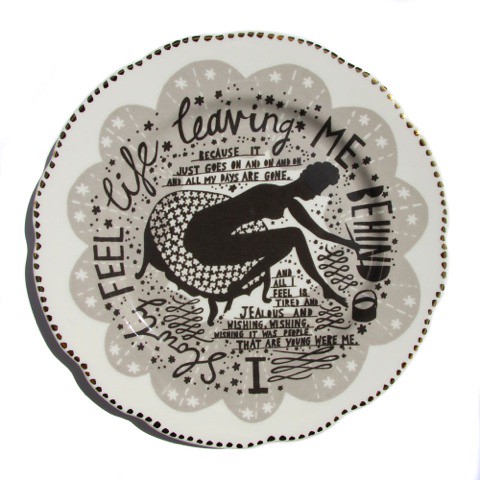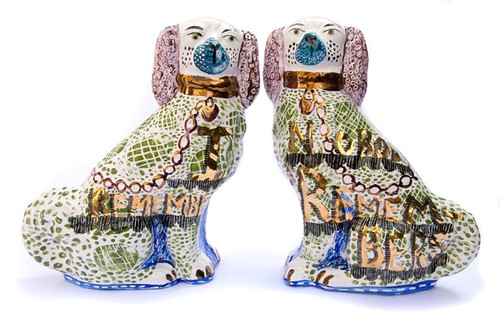Monday, 1:01am
6 August 2012
Cats and dogs
Charleston ceramics: the silent messengers of Rob Ryan’s delirious thoughts
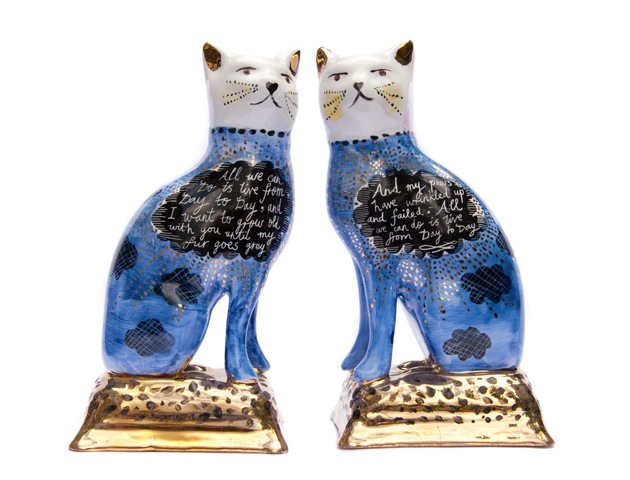
Rob Ryan’s paper cuts have made the artist a kind of ‘Keep calm and carry on’ poster-boy for nice folk with quirks who like to read, writes Chloe King.
His much-imitated aesthetic, painstakingly hand-drawn in the most delicate of mediums, pairs pointed written observations about life’s most significant moments with whimsical scenes.
But don’t go to the Rob Ryan exhibition at Charleston Farmhouse, East Sussex, the colourful home of Bloomsbury Group painters Vanessa Bell and Duncan Grant, expecting the focus to be on his paper cuts.
There are a few, but the highlight here are the tiles, plates (above), jugs and cabinets filled with hand-painted ceramic cats and dogs: his reinterpretation of classic antique Staffordshire pairs.
Ryan’s cats and dogs were first exhibited at Shire Hall Gallery in Stafford in November 2010 and have since found themselves on the cover of Spitalfields Life by The Gentle Author.
Rob Ryan, Nobody remembers.
This show, marketed as the artists’ response to the Stafford pieces in Charleston’s own collection, shows Ryan’s continuing interest in ceramics, perhaps a strange turn for a master of clean, sharp, flat, papercuts and prints.
From Grecian urns to Grayson Perry, pots have always made good vessels for storytellers. But the medium still doesn’t seem an obvious choice for an artist who quit painting in favour of papercutting as a form of ‘self-censorship’.
In his quarterly newspaper, S.P.Q.R. (Senatus Populusque Ryantown), Ryan explains that was attracted to paper as a medium that had ‘less mess, less waste, less stuff’.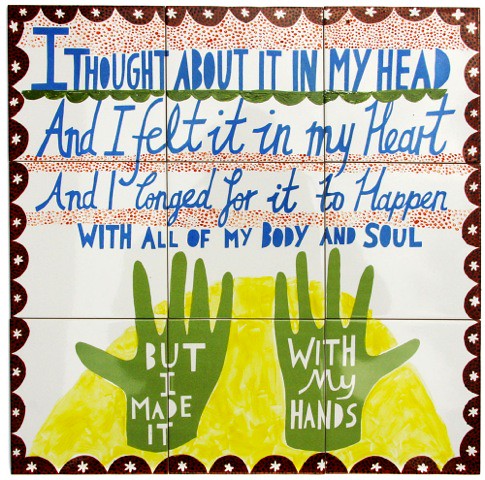
He had begun working on ceramic tiles (above) because, he likes ‘the idea of art being looked at everywhere, not just in a gallery but as objects that we have all around us.
‘When I started to work on ceramic tiles it seemed fine to transfer this very flat, shape-based way of working to this new medium,’ he told me.
‘It worked fine for tiles and plates but on the dogs and cats it just didn’t apply. They needed to be painted, and because the process dictates multiple firings it was a nice drawn-out process of laying down colour on colour.’
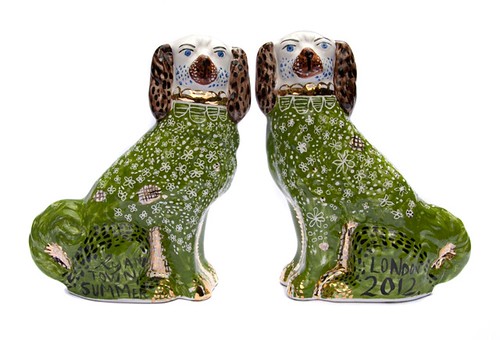
Ryan sources blank pairs of dogs and cats (top and above) from a potter in Stafford. Asked whether the pairs held any particular significance, Ryan said: ‘I know it’s a shallow answer, but they are so damn cute! But to decorate them quite extravagantly and put words on them, they then become the silent messengers of my delirious thoughts.’
So this exhibition marks both a beginning, and a return for Ryan: to his time as a student of Fine Art at Trent Polytechnic, which was when he first discovered the Bloomsbury Group.
He found in them a ‘joy in making that I just didn’t see in the contemporary art of the 1980s that surrounded me.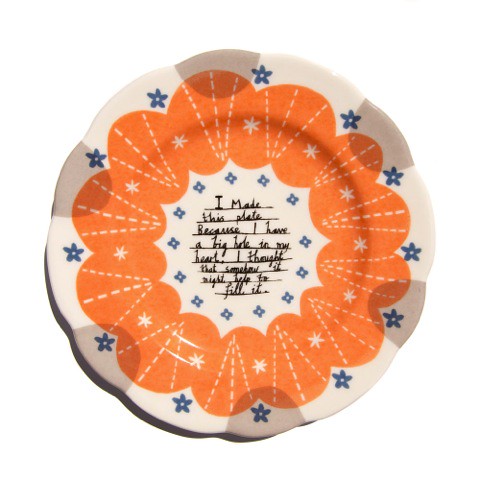
‘I saw freedom – not necessarily just in expression but as much in attitude. It said: “we’re not happy with what you’ve given us but we’ll take it anyway and make it better, the way that we want it to be, we’ll put our mark on it and make it ours.’
‘Rob Ryan’ is at the Charleston Gallery, Charleston, Firle, Lewes, East Sussex BN8 6LL until 2 September 2012
Eye is the world’s most beautiful and collectable graphic design journal, published quarterly for professional designers, students and anyone interested in critical, informed writing about graphic design and visual culture. It is available from all good design bookshops and online at the Eye shop, where you can buy subscriptions and single issues. Eye 83 is out now, and you can browse a visual sampler at Eye before You Buy.

